Patterns and counting have no place in Katika’s world of crochet.
Katika crochets full-on images which when viewed from a distance look like paintings. But upon closer examination (you won’t be able to resist zooming in on images of her work), you discover row upon row of neatly connected single and double crochet. Remarkable!
Katika’s process is akin to a ‘paint by number’ approach in which she breaks down every element of her image by colour and shape. Then she dyes yarns to match the colours, crochets each shape and then stitches it all together into a cohesive whole.
We’re so grateful to Katika for giving us a look into her creative process and artistic journey. It’s a story about pushing the boundaries of fibre and technique you won’t want to miss.
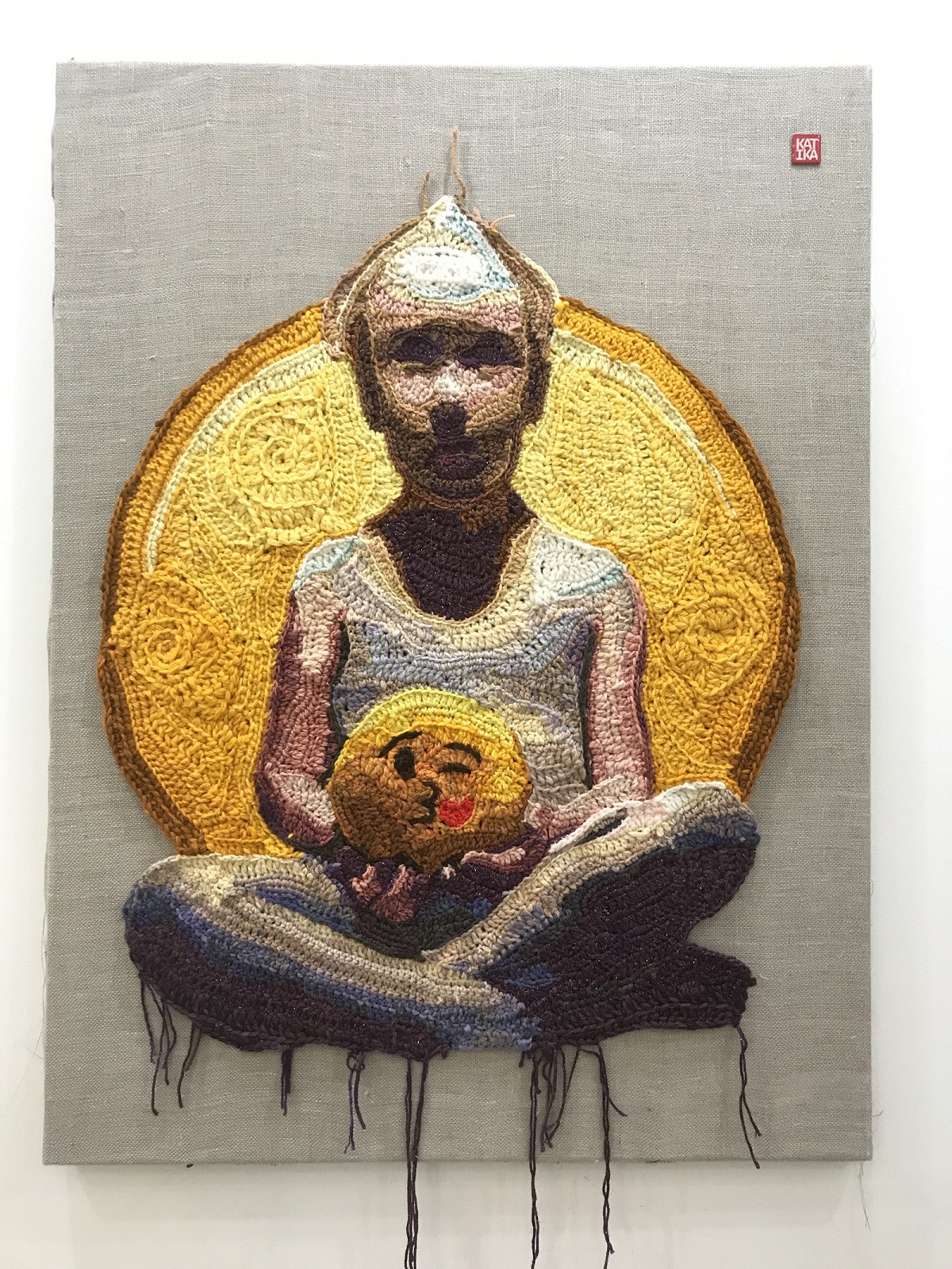
The freedom of yarn
TextileArtist.org: What initially attracted you to textiles as a medium? How was your imagination captured?
Katika: Art and crochet have always been my two passions. And I enjoyed them separately for almost two decades.
I explored every fine arts medium for my artistic pursuits, and then I crocheted as a means of meditation. It was my comfort activity for fatigued eyes and hands. (Although I was never good at following crochet patterns and rarely made anything practical.)
But one day, a thought struck me: what if I paint with yarn? I tried it and never looked back.
Yarn is an amazing medium. I use different coloured yarn much like using paints. I combine different thicknesses and colours together and crochet shapes that behave like ‘brush strokes’ with new, vibrant colour combinations.
Yarn allows me enough freedom, while at the same time, lays strict rules for experimentation.
Yarn already has a firm shape, which allows me to arrange it in shapes, leave trailing underneath the artwork, tie in knots, and more. If needed, I can also let a piece lie for a bit and rethink how to communicate my idea.
I love how soft and pliant yarn can be and how I can create optical effects by mixing several yarns. These combinations can result in new, vibrant colours, but the individual threads themselves are always still there.
On the other hand, I can’t do just anything with yarn. I must imagine the whole palette before I start working because yarn doesn’t allow blending of colours like paint. So, to create a vibrant image, I have to dive deep into colour theory, so the colours compliment each other and don’t clash or become muddy spots.
Yarn doesn’t allow for mistakes in shapes or proportions either. Odd stitches can’t be corrected easily. It’s almost impossible to correct serious mistakes later on without having to redo the majority of the piece. I must go back and unravel huge pieces or start afresh if something is askew.
Thread can also be symbolic. For example, it can represent Ariadne’s thread leading you out of darkness or serve as a physical representation of human connections. All my pieces are created with these analogies in mind, which makes me peaceful and happy.
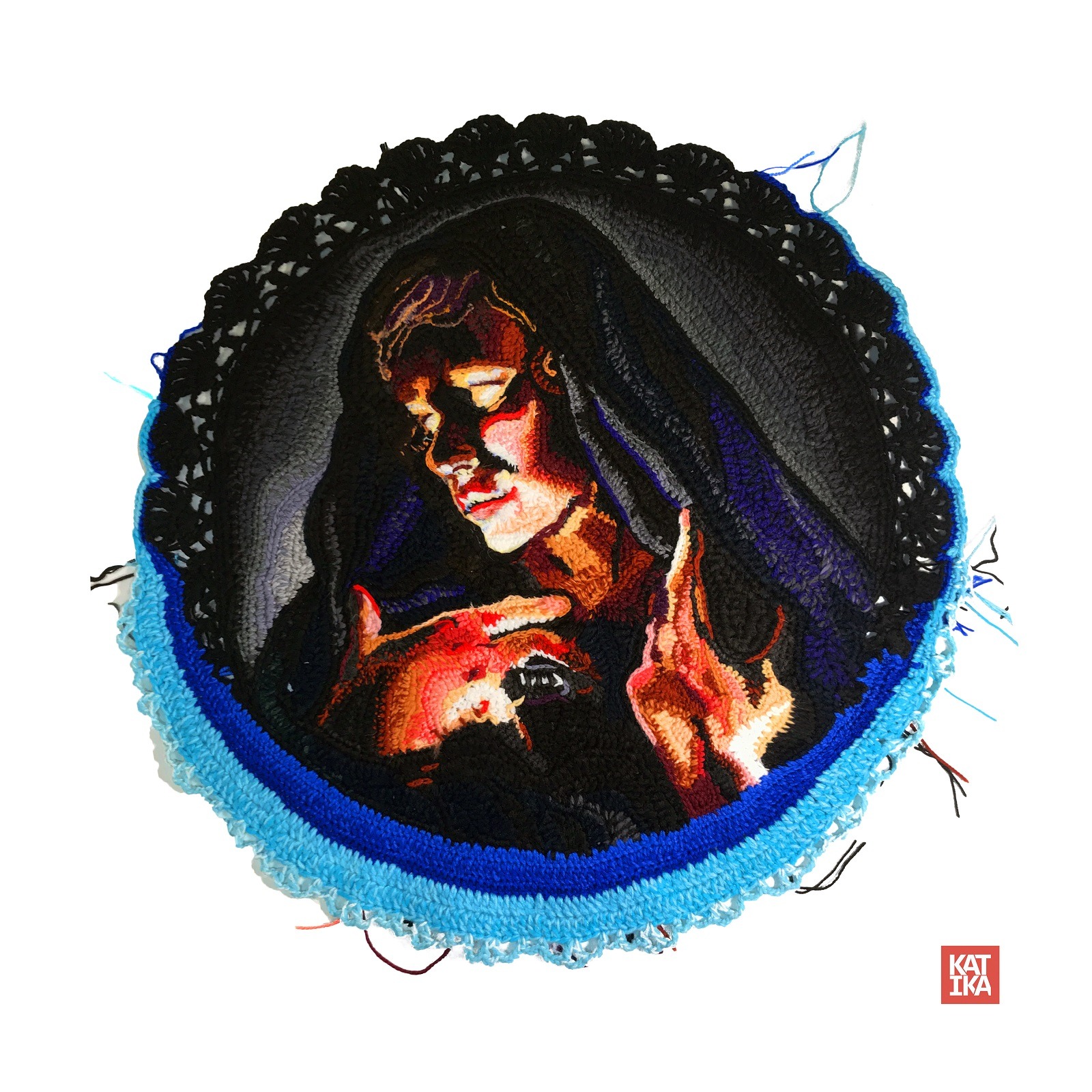
What or who were your early influences and how has your life/upbringing influenced your work?
I have had so many influences that it would be impossible to list them all. But there are three I must mention.
First, my mother and grandmothers are all good with needles. They sew, knit and crochet. Growing up in that environment taught me to try new things, experiment with different media and create things with my own hands.
Second, Egon Schiele’s body of work has had an immense influence on my art. His artwork is often hyperbolic and raw, and his subjects are unnaturally posed and overtly sexualized without being vulgar. Ever since I first saw his art, I strived for the same degree of authenticity and freedom.
Lastly, Gustav Klimt’s art fascinated me with its vibrant colours and eroticism. And it taught me to be more liberated in the way I choose and portray themes and subjects of interest.
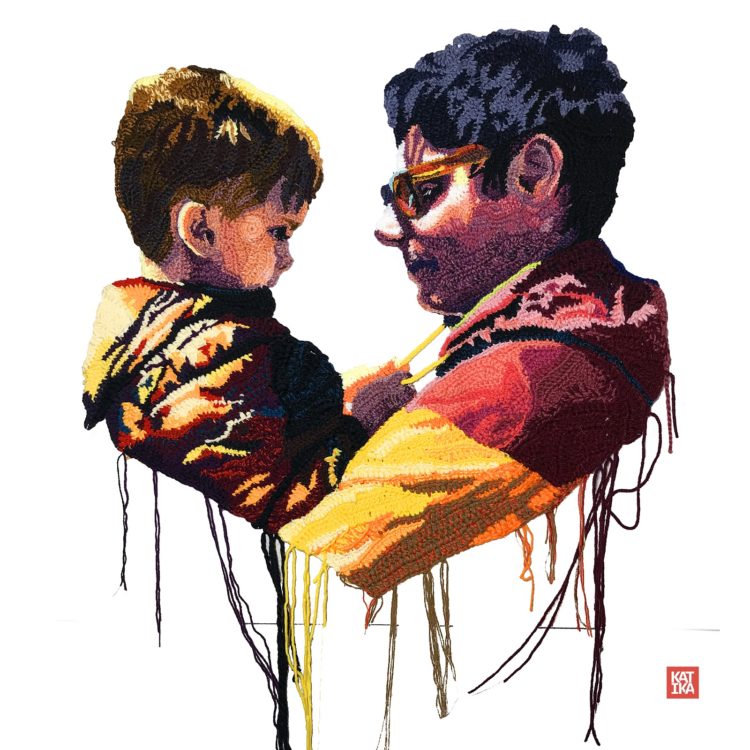
What was your route to becoming an artist?
I have always liked drawing and painting. I identified as an artist since childhood and couldn’t imagine any other career.
I started out by drawing my favourite characters from cartoons and recreating the most exciting scenes. During primary, middle and high school, I went to art classes and to an animation school for children.
After finishing high school, I went to a vocation school of rare professions to become a jeweller and then to a state university where I got an animation degree.
I participated in art shows along the way and started selling my art after finishing high school.
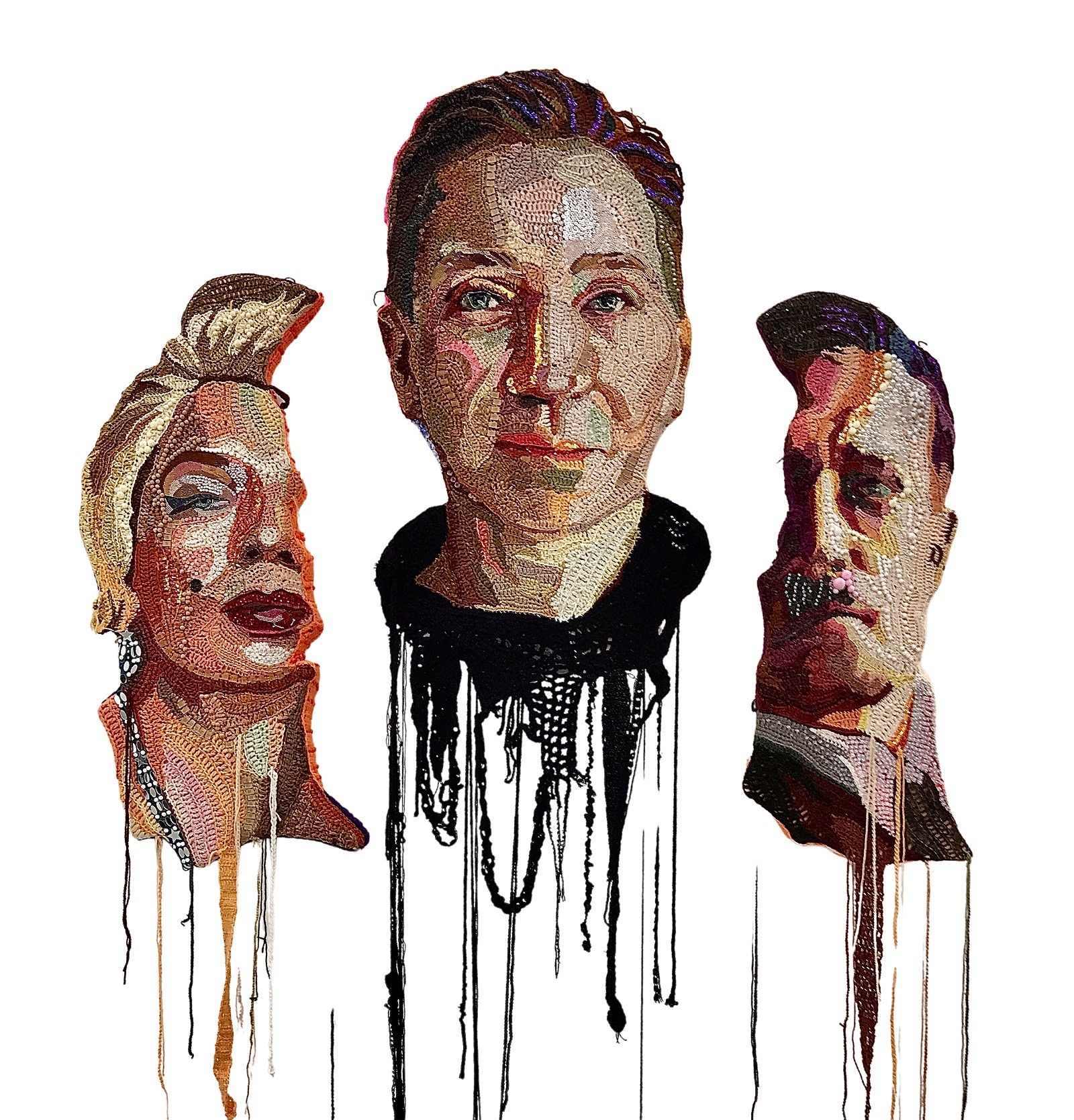
Yarn ‘painting‘
Tell us about your process from conception to creation
For me, an image of the future artwork and idea I want it to convey go hand in hand. It starts with me wishing to create an artwork. It might be a portrait of a person I admire, a personified representation of a certain idea (depression, self-harm) or a concept related to phenomena of pop culture and collective memory.
I always have a concrete idea of what I want to crochet before I start.
I then create several sketches, sometimes with colour pencils, sometimes with watercolours. I lay out the composition, experimenting with colours and shapes.
Once I have a final sketch, I prepare my yarn. I used to mainly work with acrylic, factory-dyed yarn. It was relatively cheap, but I had to work hard to pick colours and arrange them within my palette.
I had also experienced an allergic reaction to organic yarn, so I used wool or cotton very sparingly.
Several years ago, my allergy seemed to disappear, so I transitioned to primarily working with wool. But available colours were still somewhat limited, so I then thought why not dye my own yarn?
I usually buy neutral coloured yarn online. I like having a full range of colours available at all times, so I routinely dye yarn in the colours I use most often. When I pick a pigment, I usually make several shades from lightest to darkest.
Dyeing itself is not too hard once you get the hang of it. The most difficult part for me was figuring out how to dry the yarn. I tried different techniques and finally found what works best for me.

When my yarns are ready, I start crocheting, trying my best to create coloured shapes as close to the shapes of sketches as possible. To make sure I have the right sizes and shapes, I’ll use my crochet hooks and fingers as measuring tools.
Once a piece is finished, I move on to framing. I used to sew the crocheted works onto canvas and hang them on walls in frames. But now I prefer stretching the images on pieces of polystyrene foam.
Sometimes, even after a piece is framed, it’s still not done. I’ve reworked and reimagined artworks before when I felt something needed to be added or altered.
Recently I tried working with epoxy resin in which I placed my pieces like flies caught in amber. The result was pretty satisfying, but I encountered a lot of unforeseen issues on the way. I learned to first learn trade secrets before ever trying something that risky again!
I had no idea how much trouble epoxy resin presents. First, I had to find the right type of container to hold it without seeping through the seams. Second, resin is especially challenging with yarn. There were too many air bubbles, which forced me to redo the whole process several times.
On top of all that, I discovered perfectly transparent resin still changed the yarn colours both slightly and dramatically.
The final piece actually looks great, especially after adding some illumination. But the colours don’t pop as I have hoped which was a bit disheartening.
My best advice for exploring epoxy resin: make a lot of test pieces and plan for everything.
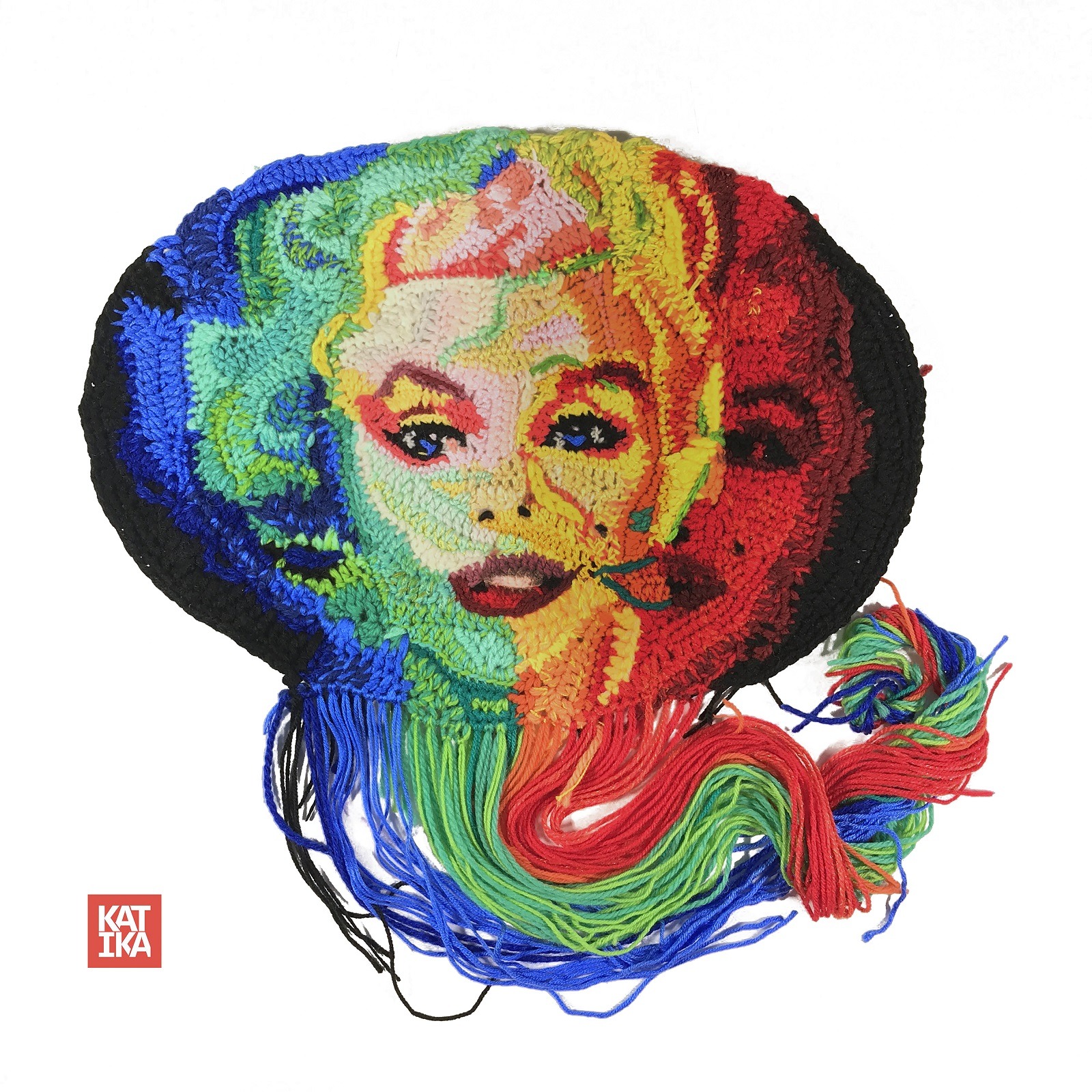
Tell us a bit about your chosen techniques and how you use them
My main technique is freeform crochet, which I started using before learning its name.
I never count loops and stitches, and I don’t use patterns. Instead, I usually start with a small crochet circle and add rows of stitches to that until the shape is right.
I use simple stitches, combining single and double crochet freely into the simplest shapes I can. My main goal is to recreate a part of an artwork without counting stitches and overthinking the process.
I mainly use Nos. 2 and 3 crochet hooks. I only use bigger hooks when I need to create gigantic stitches for a particular element.
I also sometimes create separate parts and then combine them into one piece. I usually crochet the parts together by using hanging tails of previously stitched edges or adding a new connecting thread to tie the parts together. In the past, I sometimes used sewing needles and threads, but I really prefer staying loyal to my beloved crochet.
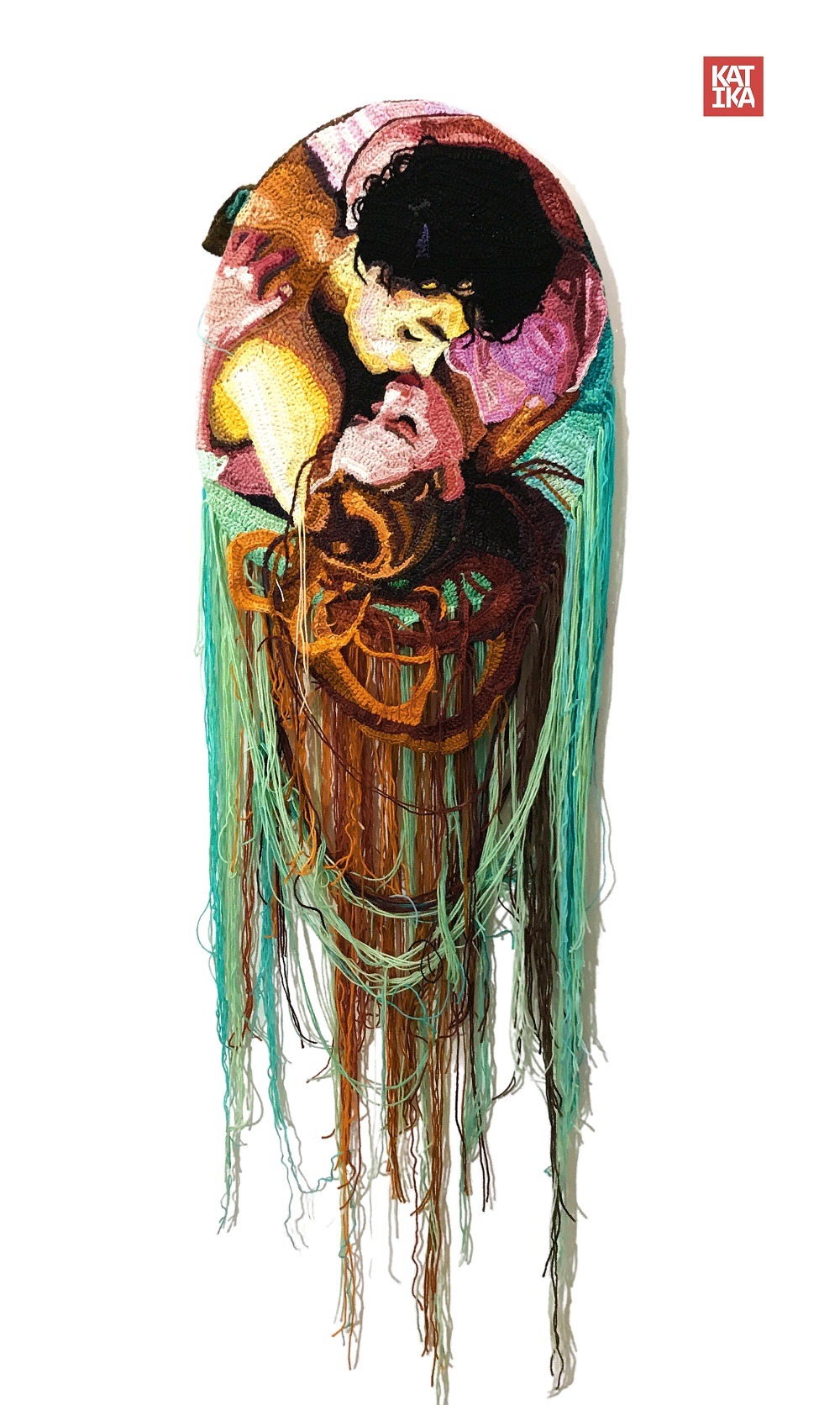
Creative growth
Tell us about a piece of your work that holds particularly fond memories and why?
It is hard to pick one artwork, as they are all dear to me. But I do grow dissatisfied with my past work pretty quickly.
I am still proud of the couples portraits I created around 2016-17. The series is called ‘Kiss’ and it depicts kisses shared by couples from all over the world. The imagery of a kiss is the most recognizable and mundane sign of love that has fascinated me since childhood.
I posted an online request asking couples to send me their favourite kissing photos and their love stories. I created many colourful, tender portraits inspired by their stories from across the globe.

How has your work developed since you began and how do you see it evolving in the future?
I have grown technically and conceptually over the seven years I have been crocheting yarn paintings.
In terms of technical growth, I now sometimes spin and almost always dye my own yarn. And I have several framing options, which is essential for my art. You can’t really create a piece if you have no idea how to hang it on the wall without being deformed or damaged in some way.
In terms of growing conceptually, I’ve become freer with the ideas I put into my artwork and how I present them. I frequently play with form and utilize abstract images and symbols. And I create 3-dimensional art objects for my art shows.
The more I crochet, the more potential I see. And the more I rework old pieces into assemblages, the more I can convey new meanings. I am overjoyed with this potential, though I am never sure where the path will lead me, I am always up for anything new.
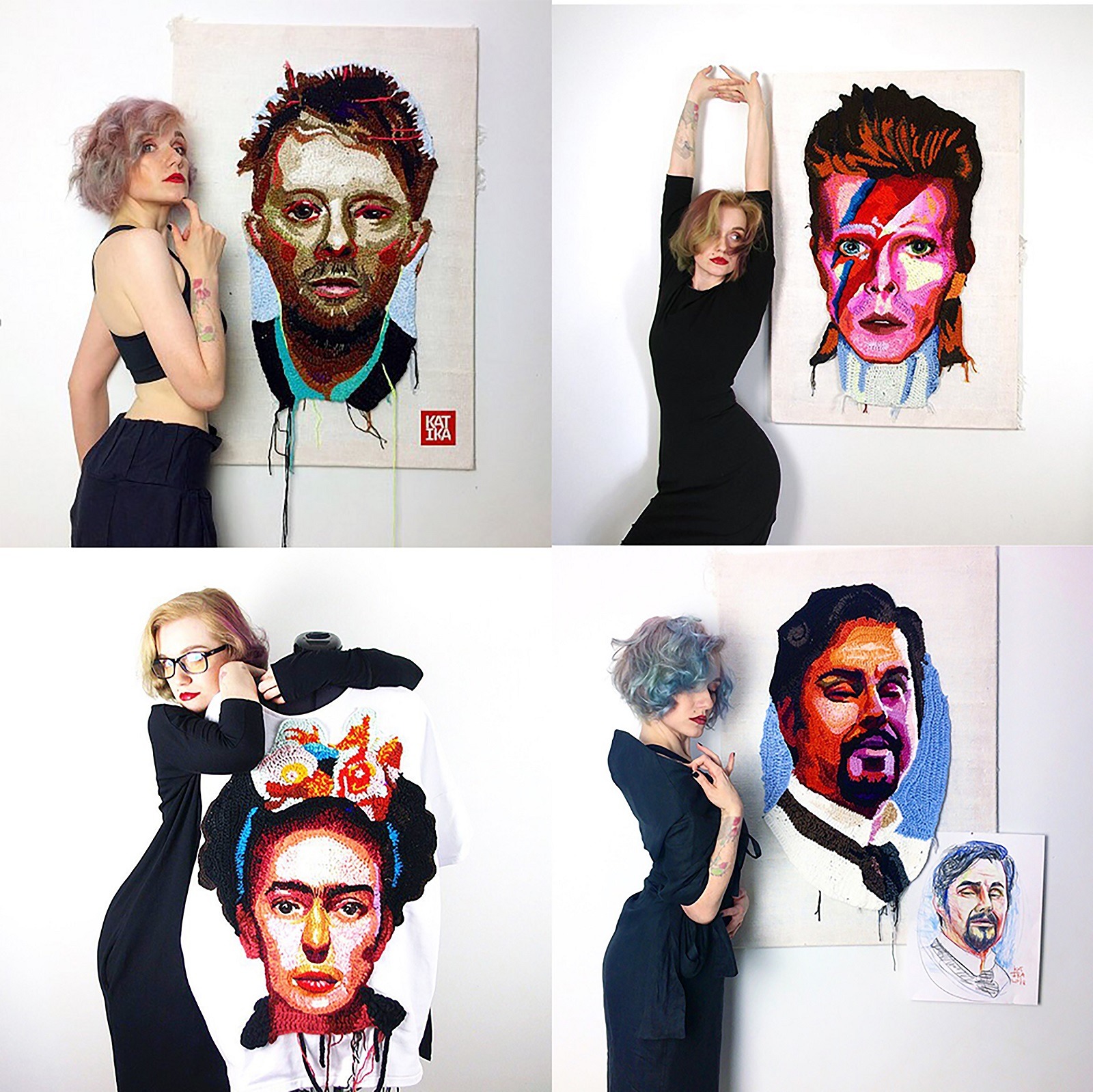
Key Takeways:
- Ask yourself ‘what if’ now and then to push the boundaries of traditional stitch
- Reacquaint yourself with colour theory basics and imagine how that could inform your work
- The simplest stitches can be combined to create remarkably intricate textile art
About the Artist:
Russian artist Katika is based in Moscow where she crochets colourful portraits and images. Describing her work as “yarn paintings or crochet art,” she wants to show that crochet can also be viewed as “modern art.”
For more information visit Katika-art.com and on Instagram
Katika pushes the boundaries of traditional crochet. How have you pushed the boundaries in your own textile art? Let us know below.
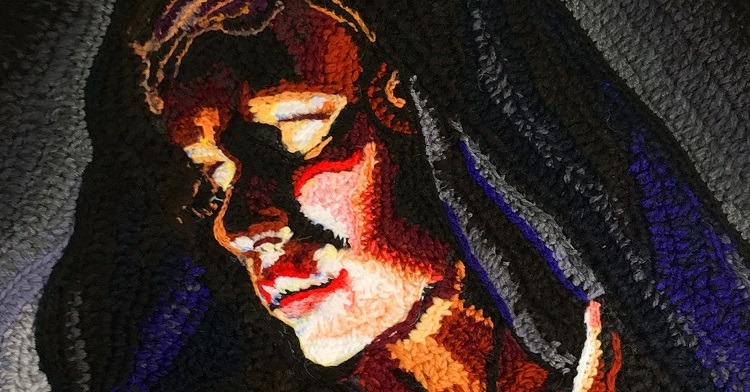

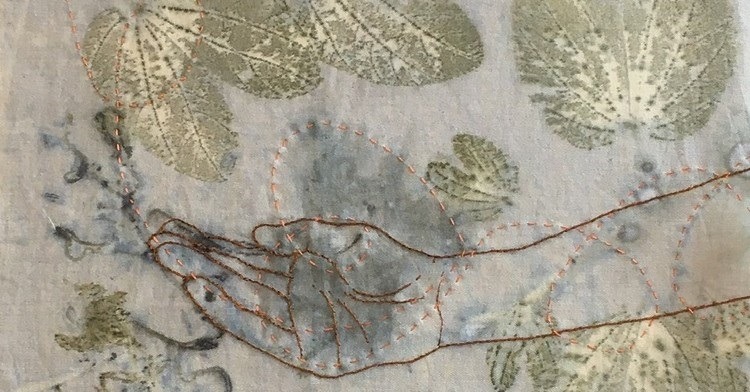
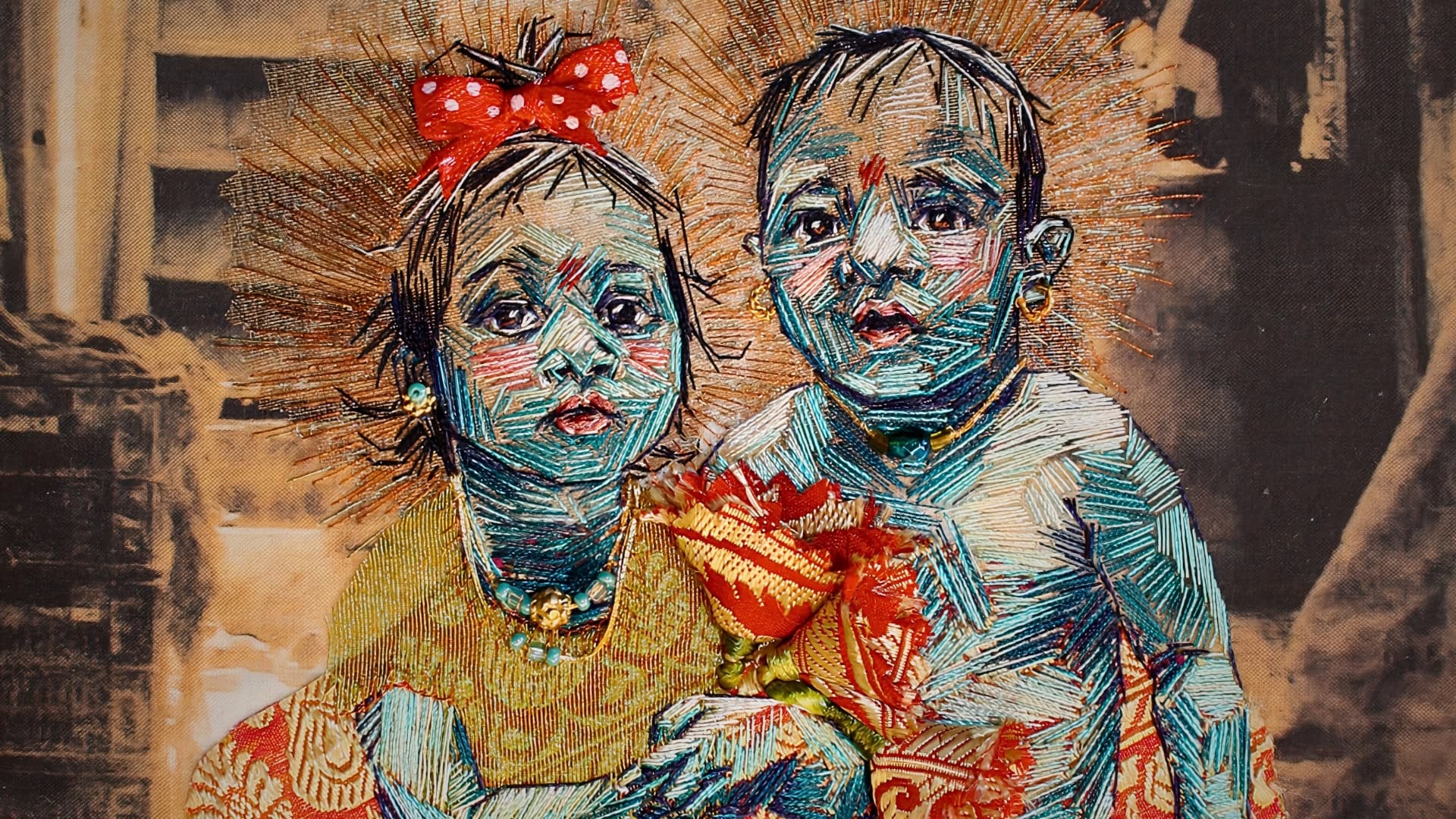
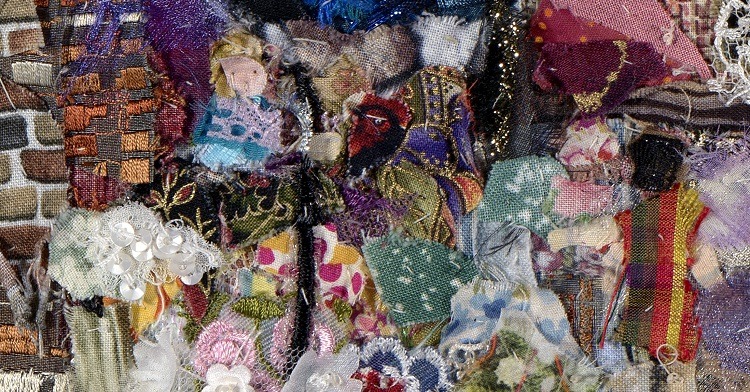
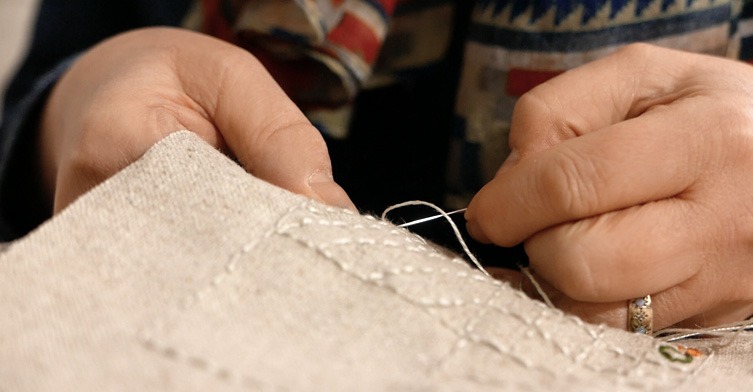
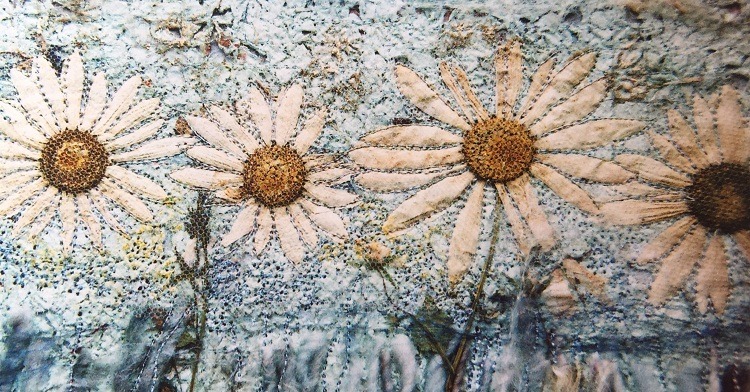
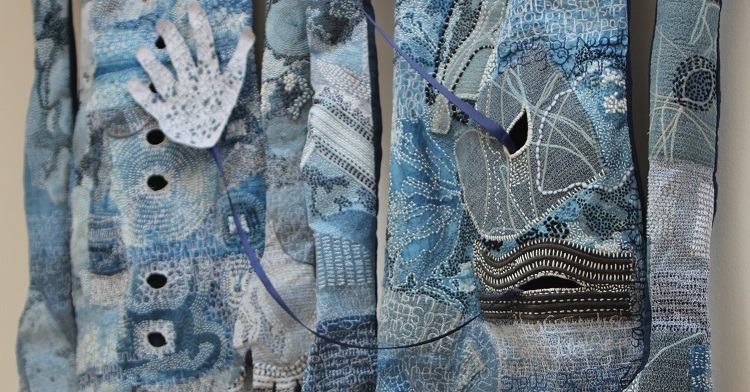
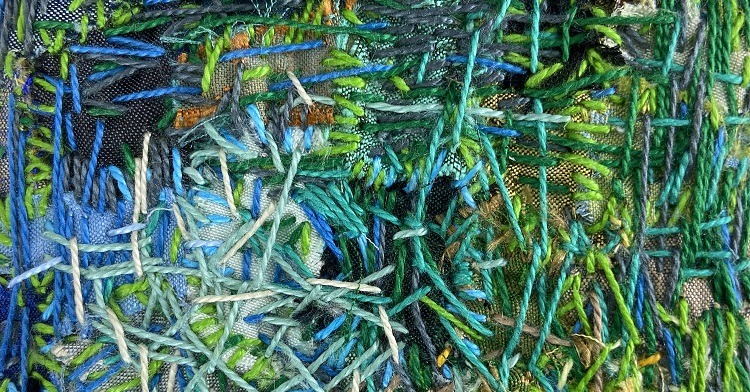
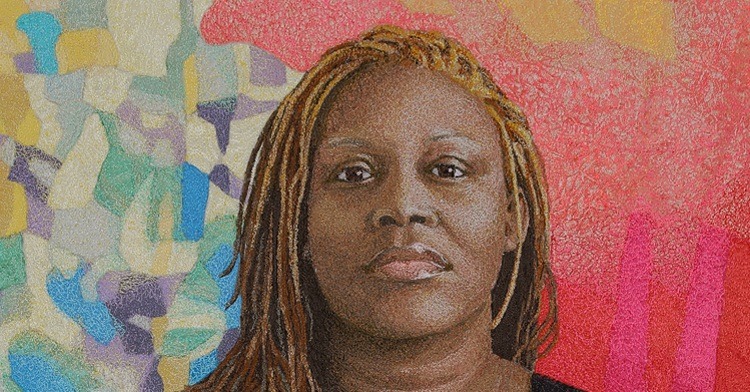
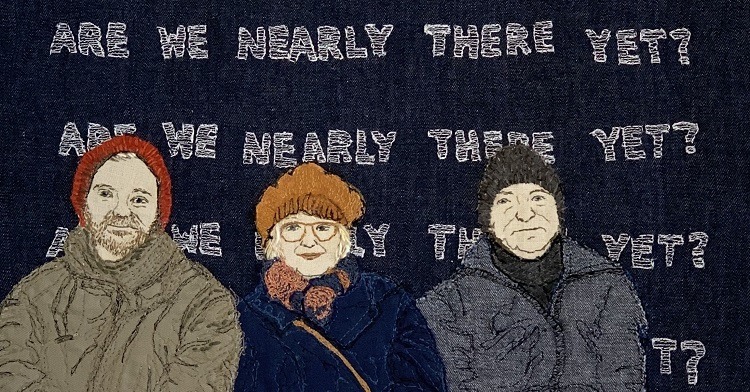
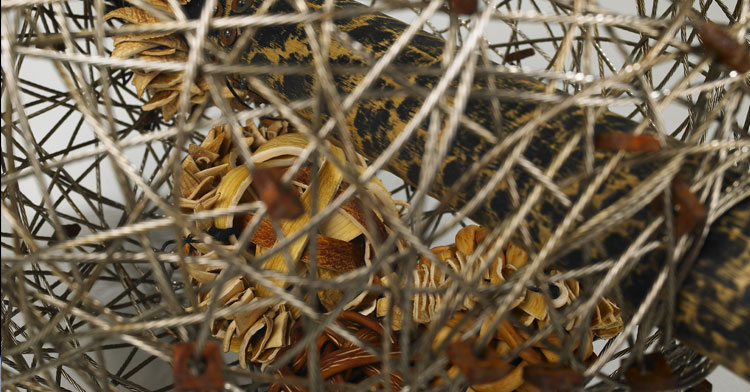
8 comments
Jen Cantwell
I think this is a technique that was pioneered by Scottish artist Jo Hamilton some years ago now. She’s a really dynamic artist, check her work out. Other crochet artists are available and no I’m not affiliated
https://www.johamiltonart.com/shows/
https://mymodernmet.com/jo-hamilton-crochet-art/
Francene
The only word I can give these crocheted works of art is AMAZING!
Jane Leslie
I have been a fiber artist for over 40 years but have never seen anything as breathtaking as Katika’s work. I experiment with non-traditional fibers in knitting, crochet, and embroidery and am constantly looking for new inspiration … and here it is! I would love to, not copy, but to draw inspiration from Katika’s work so I hope she plans to publish a book where we can learn from her techniques! Thank you so much for this article! You have me once again thinking outside the box!
Jenny Smart
Amazing who would of thought, proves that textile is a wonderful art form thinking outside the norm and what can be achieved from mundane to explosively brilliant.
Jay D Spell
I wish I could apprentice under this artist. I absolutely love what this technique can do.
Susan Smith
Fascinating. I suspect those who think crochet dull have not really tried it. As Katika shows it is so versatile. The only limit is one’s personal creativity.
Threadpainter
I am smitten with your work … absolutely stunning and so creative !!
rose
fascinating use of what many consider a dull craft!